
Eating Away At Our Anatomy

SPECULATIVE ART EXHIBIT
TEAM
Golpar Jalali
Ping Ni Chen
Zina Bazarbashi
TOOLS
Rhino & 3D Printer
Adobe Premiere Pro
Photoshop

EATING AWAY AT OUR ANATOMY
How is the anatomy of our jaw shaped by the food habits we have adopted throughout our evolution? In this exhibit, the displayed mixed media works point toward the role that chewing has on our facial structure, and language.
In a world where capitalist work culture and depleting resources has resorted us to popping nutrient pills and sipping liquid meals for survival, we face a new generation of humans that may forget what it was like to bite into an apple, or chew a piece of bread. The loss of textural variety, resistances and the novelty of flavor are all addressed as “memories”.
In Eating Away At Our Anatomy, the artist, Golpingbashi, created a series of mixed media works that critique our current state of food consumption. Inspired by recent scientific studies that examine discovered anomalies in dental structures amongst teens, the artist speculated a future in which our head structure has changed as a prolonged result of these new eating habits.
GALLERY OF THE EXHIBITED ARTWORKS

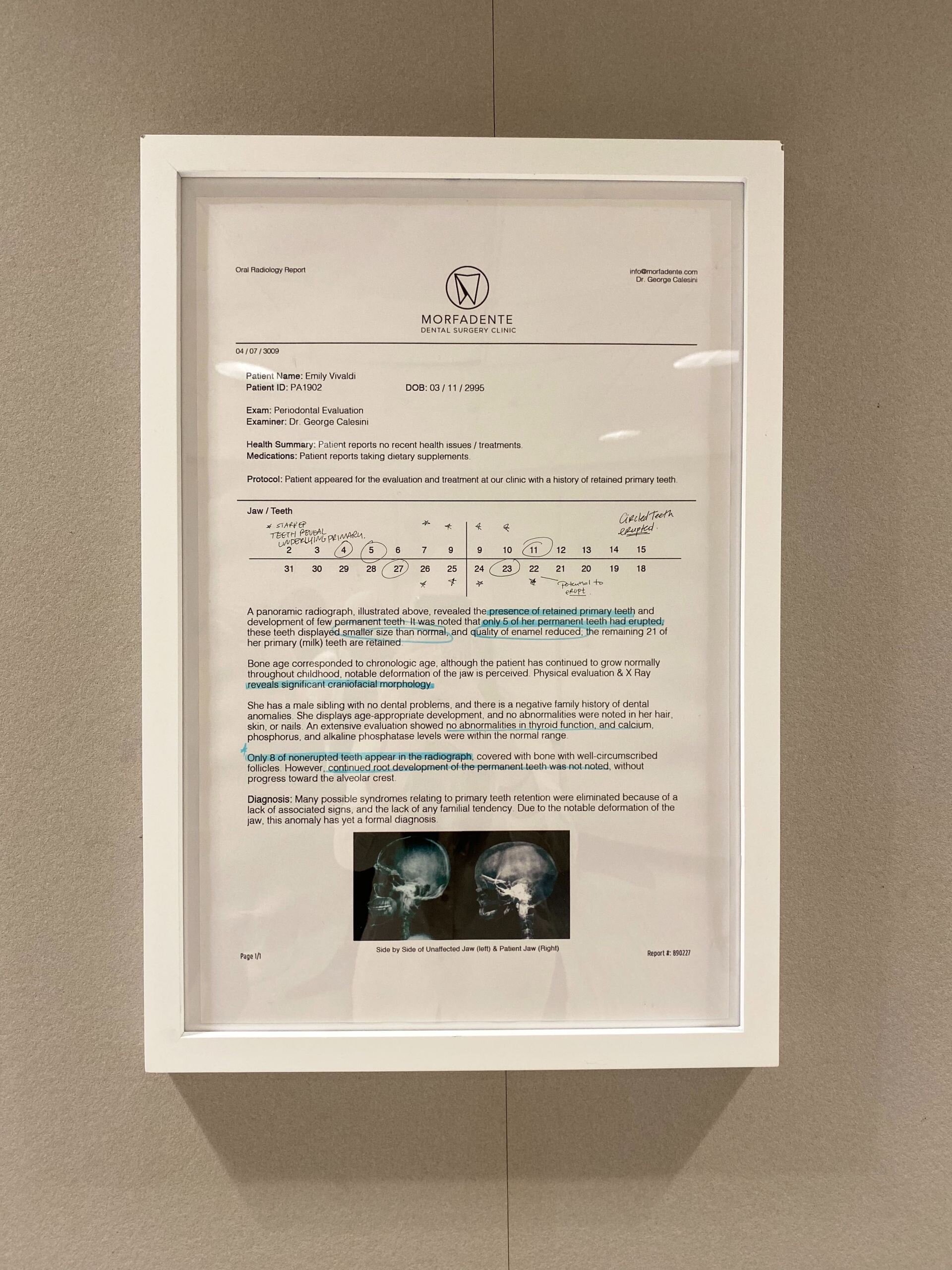
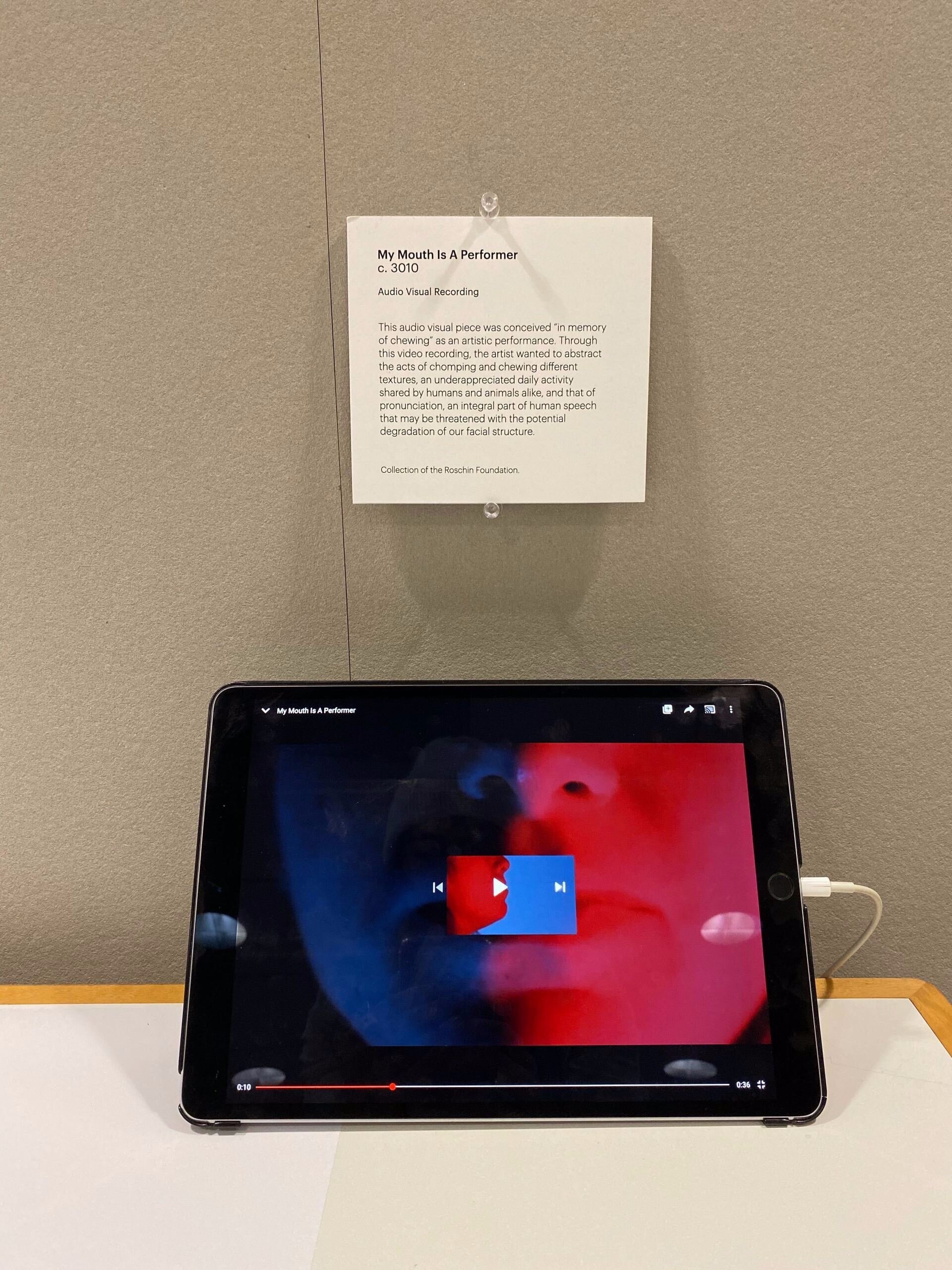
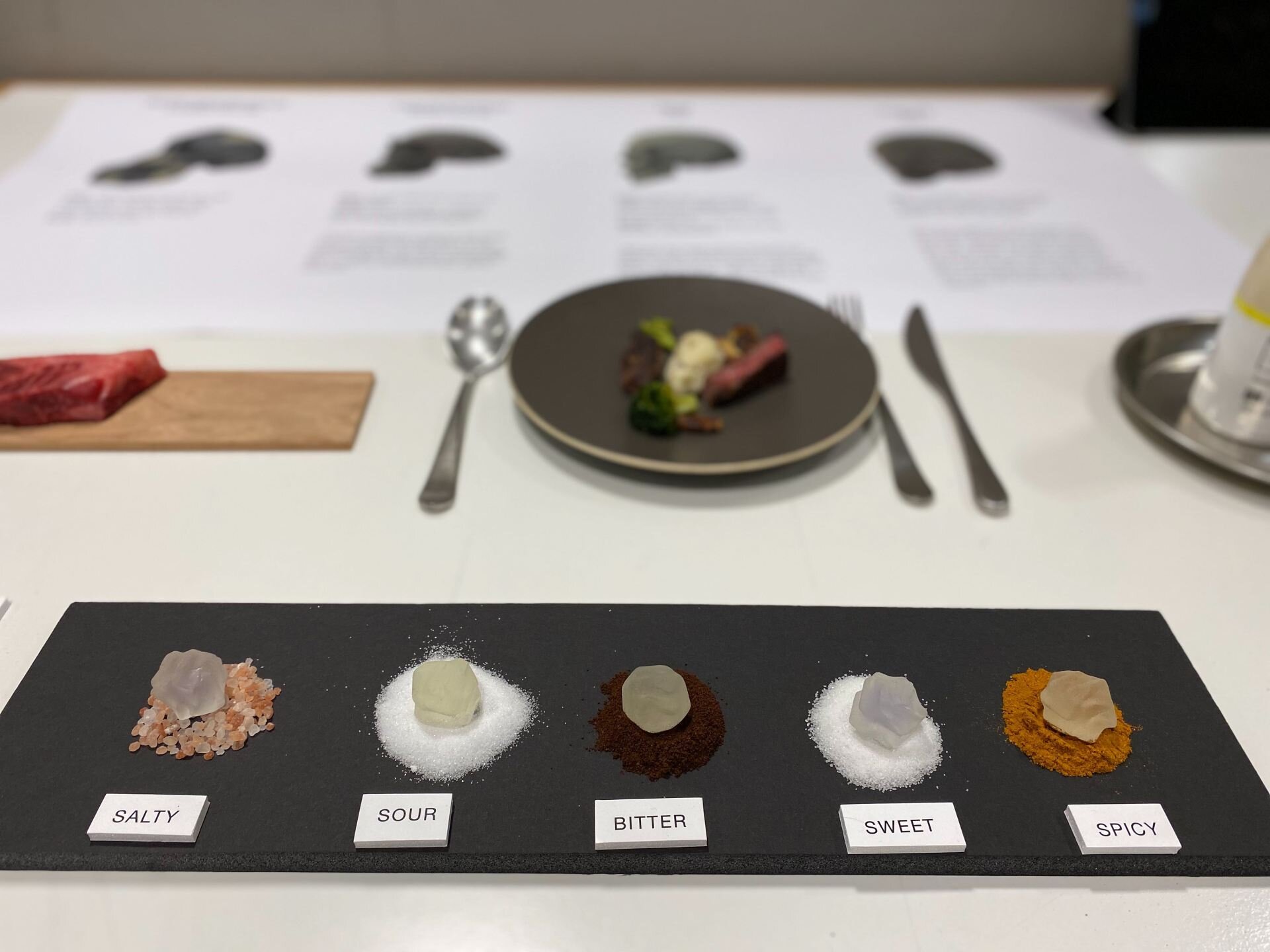
BACKGROUND
This project initiated with a simple speculative context:
What will the future look like if we no longer have the resources to “touch” or “feel” food?
By definition,”Eating” means to put food into the mouth, sometimes biting into it, often chewing and ultimately always swallowing it.
Food is thus felt in the mouth.
Initial speculations could have one considering:
“What if efficient food innovations meant the experience of physically eating is nothing but a memory?”
“What if we forgot how to chew and bite into things?”
CLOSER LOOK AT THE ‘ARTWORKS’

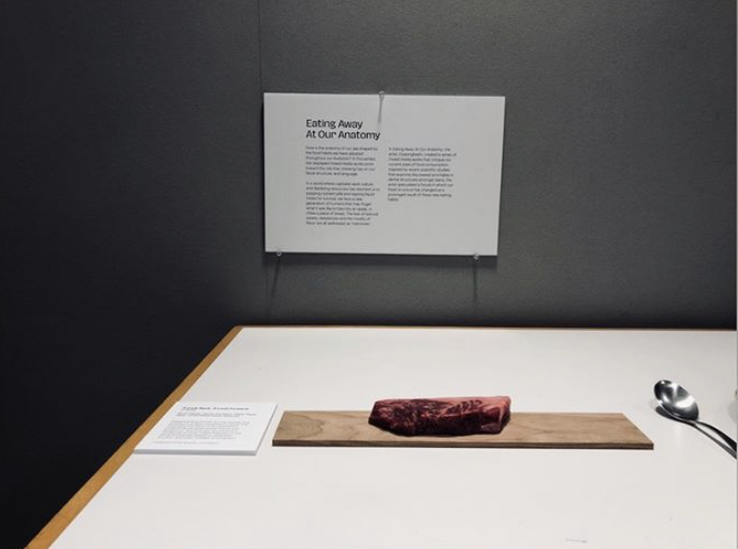
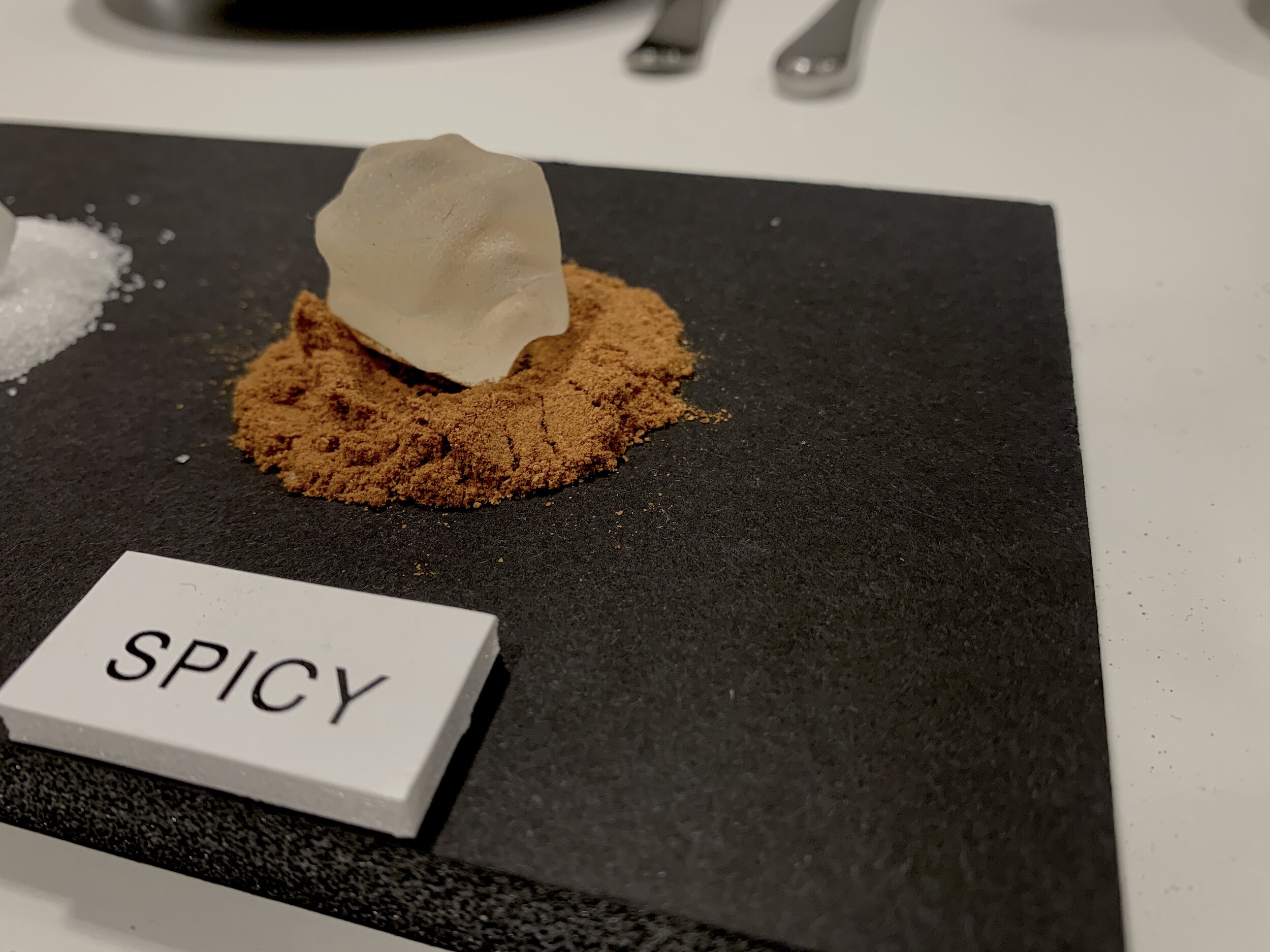
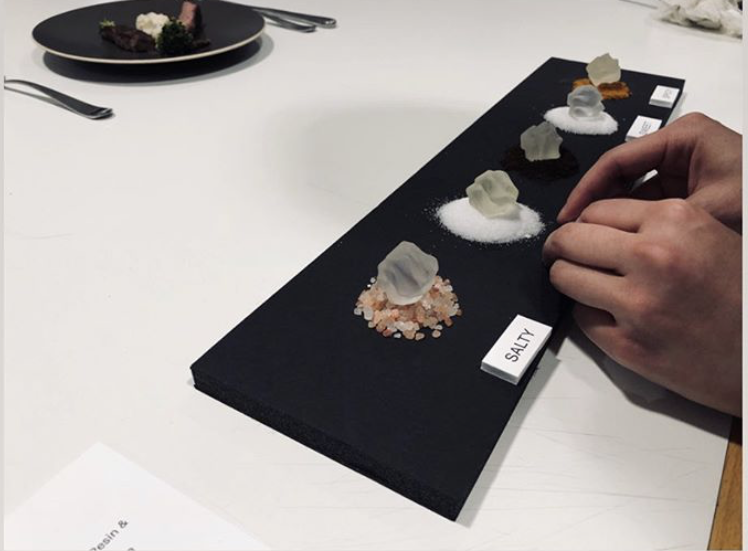
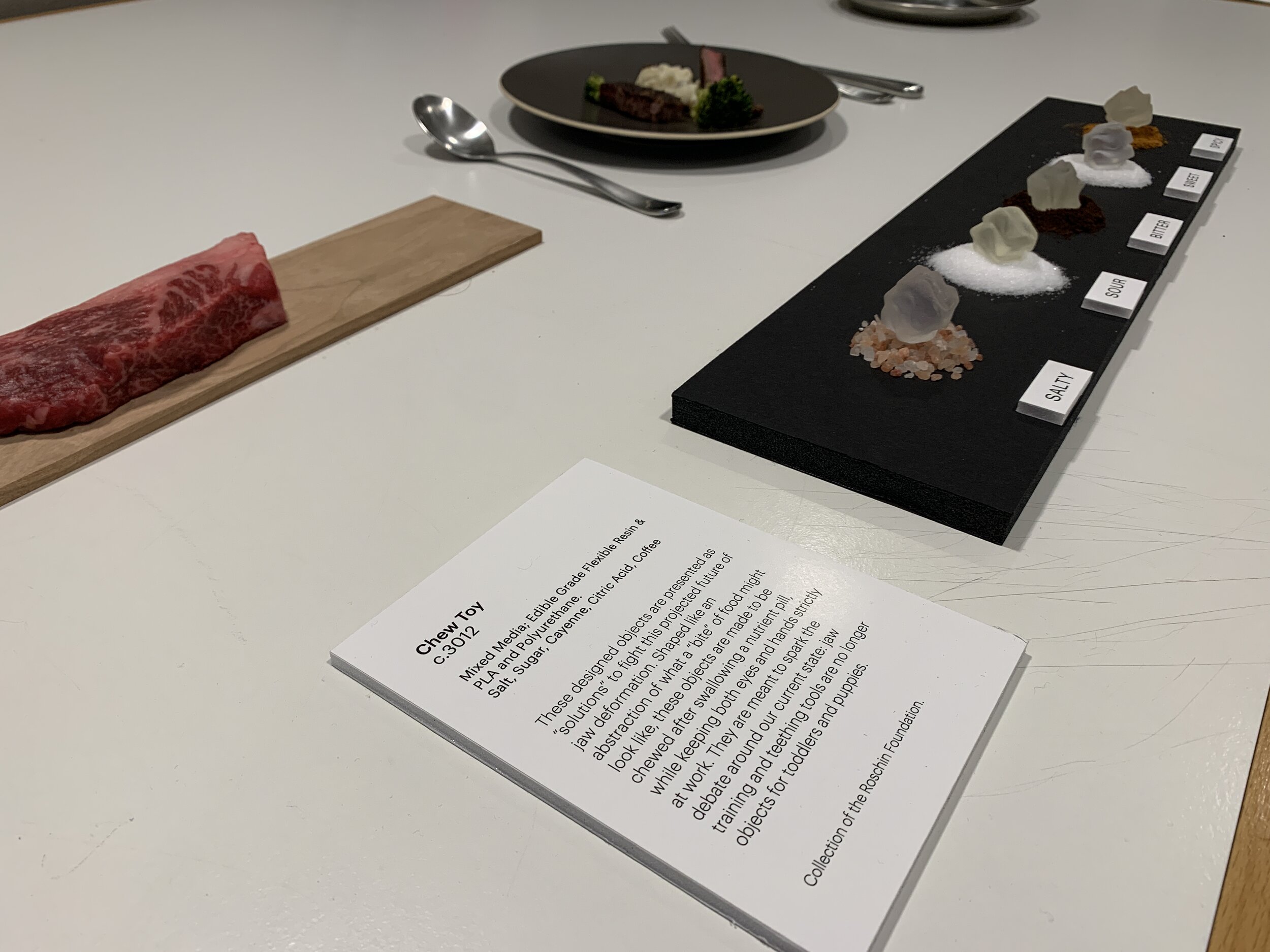





CONCEPT & RESEARCH
Considering the importance of such routine actions as biting and chewing, which we take for granted on a daily basis, this project evolved to speculate what human evolution could look like in a future of nutrient dense solubles and “efficient” ingestion of nutrients.
Context: In a world where chewing is slowly becoming obsolete, a group of scientists want to bring it back to “save” humans from evolutionary “deformation”. Medical reports are found as indirect proof that this evolution has already begun. Efforts to bring back the appreciation for this lost routine act are in full force, with artistic expression and “designed solutions” as an attempt to bring awareness to people about the importance of this issue.
Research started with learning about the human’s skull evolution. The first humans used to have big strong jaws because of their diet. They consumed fresh meat or vegetables, however, they did not have a fire or developed tools to make the food easier to chew. So the only tool that they could really rely on was their jaw. As humans invented more tools and learned to use fire to cook, over millions of years, their jaw becomes smaller since they did not need to use a lot of power to chew anymore.
Dentists were interviewed about the future of the jaw and current medical conditions were that could, in fact, make such a future a reality. They were asked: What would our next evolution look like? Based on their responses and the secondary research, it was deduced that our jaw would continue shrinking. The muscles around the jaw will consequently get weaker and will deform our facial structure. Our nasal breathing tubes will stay thin and that it will affect our breath. Our teeth structure might change to smaller weaker teeth.
Scientists and researchers have also stated that our ability to make certain sound will be compromised. It will affect the pronunciation of some alphabet and vowels. With jaw consuming less energy, there will be more nutrition recourses for our brain and our brain might start to grow.
